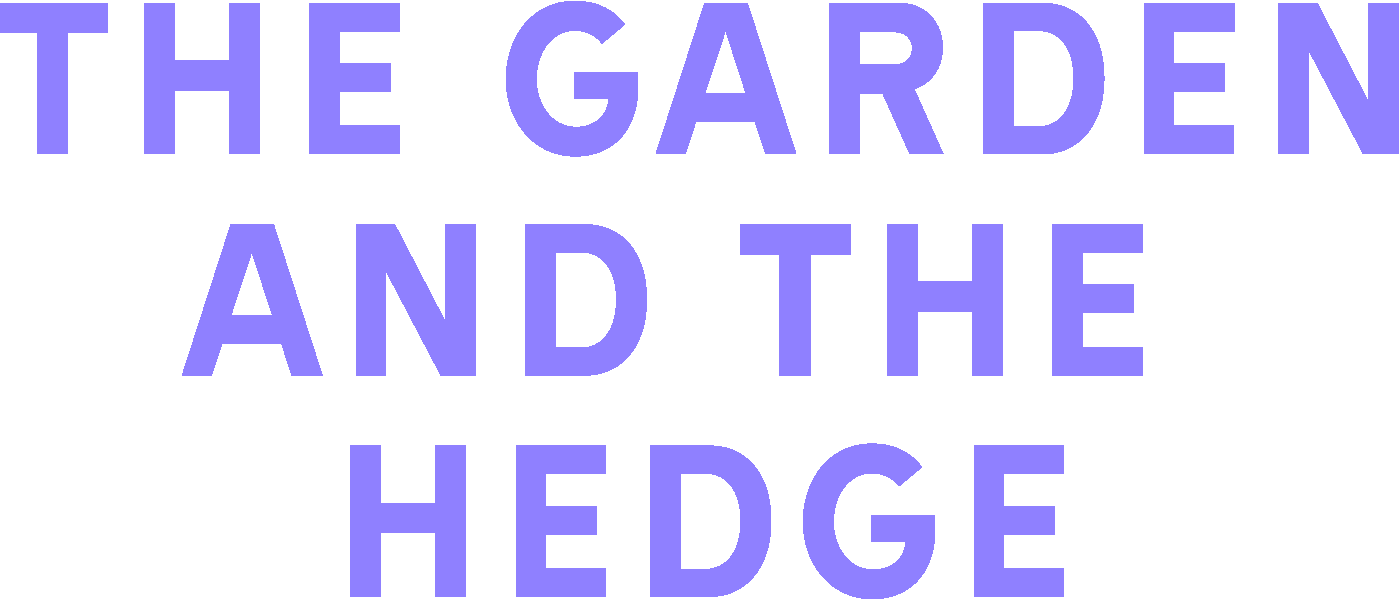
The Garden And The Hedge | Piha, Pyhä, Metsä, Maa

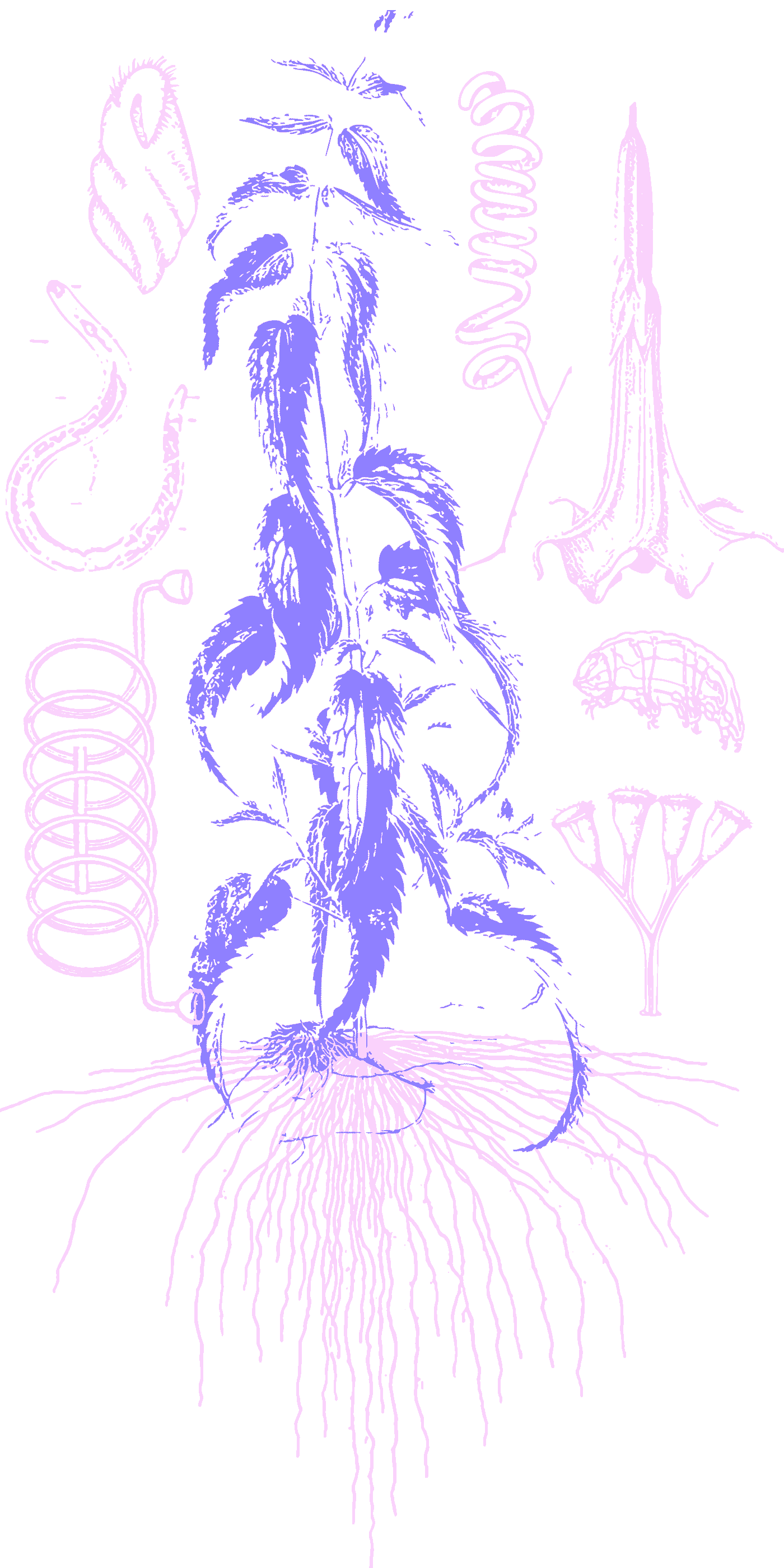
The Garden and The Hedge is Kulturhus Björkboda’s (KUBU) inaugural international summer exhibition and programme, developed in partnership with the artist and researcher Teresa Dillon. Set in a former school, KUBU’s location on the island of Kemiönsaari/Kimitoön, in the Southwest of Finland, in the UNESCO Archipelago Sea Biosphere Reserve, is the perfect location for exploring our relations to gardens, earth, soil and land.
Marking the first in a series of interrelated programmes that take the elements (soil, water, wind, fire and aether), as their starting point, The Garden and The Hedge is timed with Kimitoön’s 700th anniversary. Drawing on the island’s rich history of soil-based livelihoods—from farming to mining. The summer programme showcases 35 individual art works, performances, workshops and interventions. Inviting reflection on soil health, boundaries, resilience, and our responsibilities to the living land.
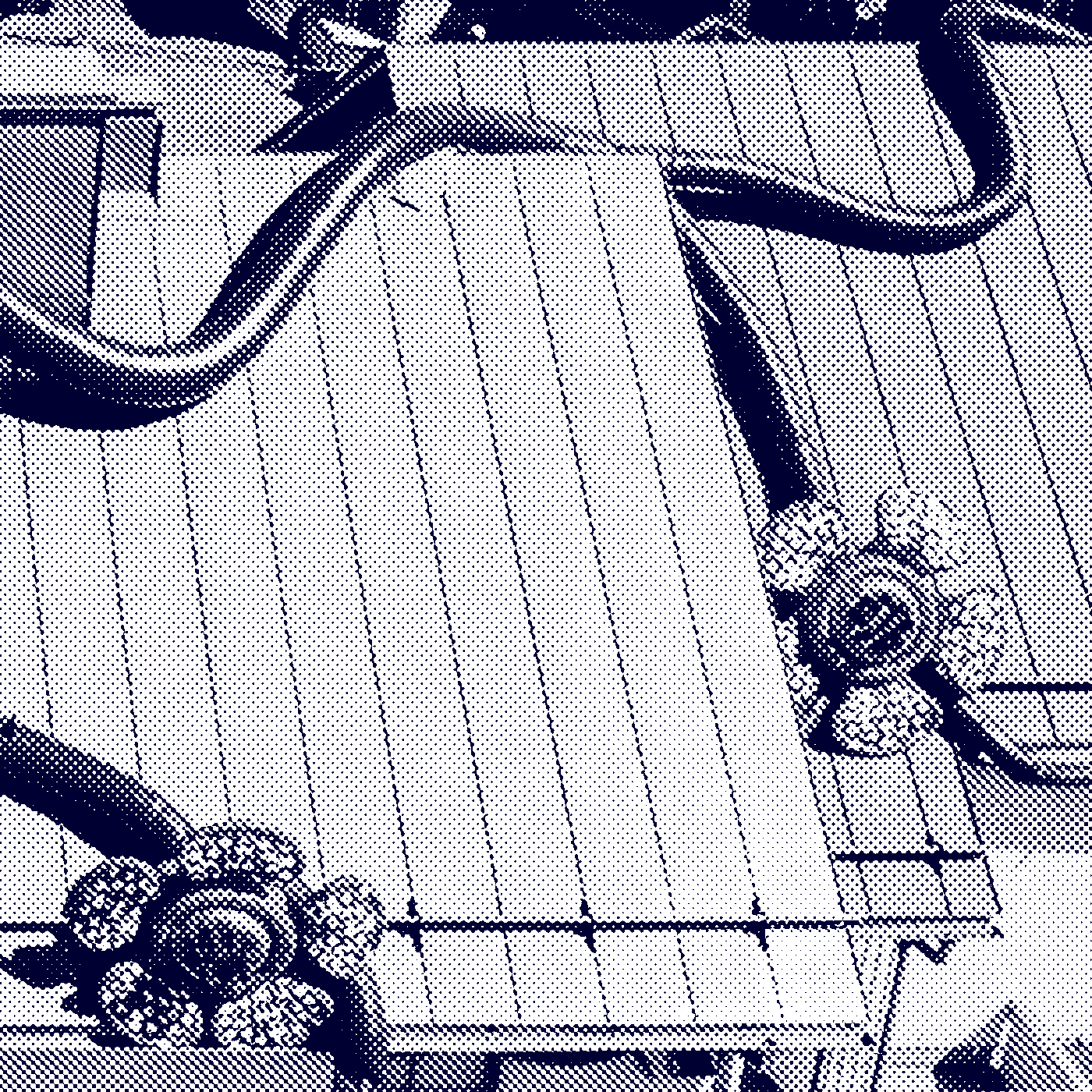
Photo: Ahmed Alalousi
Andy Best-Dunkley (FI/UK) & Merja Puustinen
(FI)
Inflatable Sculpture (2022)
What form will plants take if their genetic structure has changed because of exposure to soil contamination, radioactive radiation, pollution and human population overload and artificial changes to the natural environment? Taking inspiration from the French poet Charles Baudelaire’scollection Les fleurs Du Mal (Flowers of Evil, 1857), Freudian dream logic, death visions and streams of consciousness, Merja Puustinen & Andy Best large inflatable flower sculpture, clambers over the roof and outside walls of the KUBU building. Creating a speculative and potentially prophetic vision of future plant morphology and their associated aesthetics.
Andy Best-Dunkley and Merja Puustinen create works that address social and political themes in playful, provocative and physical ways. Spanning the fields of virtual, online and mobile games, performance, sculpture and installation, since the mid-2000s they have been creating large-scale interventions that take the form of inflatable sculptures for museums and urban spaces. In 2012, the duo founded Espoo Kunsthalle, an initiative to bring critically engaged art to suburban areas and are currently running an artistic residency to investigate the environmental challenges facing the Baltic Sea. http://www.andyandmerja.com/

Photo: (Artist)
Antti Laitinen (FI)
C-print, Diasec (2023)
For Forest Square I, II & III, Finnish artist Antti Laitinen physically removed a 10 x 10 meter section of forest, extracting its various elements—soil, moss, wood, and pines. Reassembling these natural elements into geometric forms this new abstraction of land evokes contemporary algorithmic orderings. While also nodding to the Cubist rejection of nature as mere representation, and the Dutch De Stijl restrained palettes. Forest Square I, II & III conjures up, humans historical attempt to not only control nature but also articulate through design and pattern, the mystical and divine.
Viewing the landscape as his primary canvas, since the early
2000s, Finnish artist Antti Laitinen has worked
with and through the natural elements. Armed with everyday
tools—ranging from garden implements to wood-cutting
instruments—Laitinen physically shapes, bends, digs, organizes, and
rearranges trees, soil, and water. These deliberate insertions delve
into the intricate dynamics of control that define the relationship
between humans and nature that result in highly graphic photographic
images, durational performances, and video pieces.
https://anttilaitinen.com/
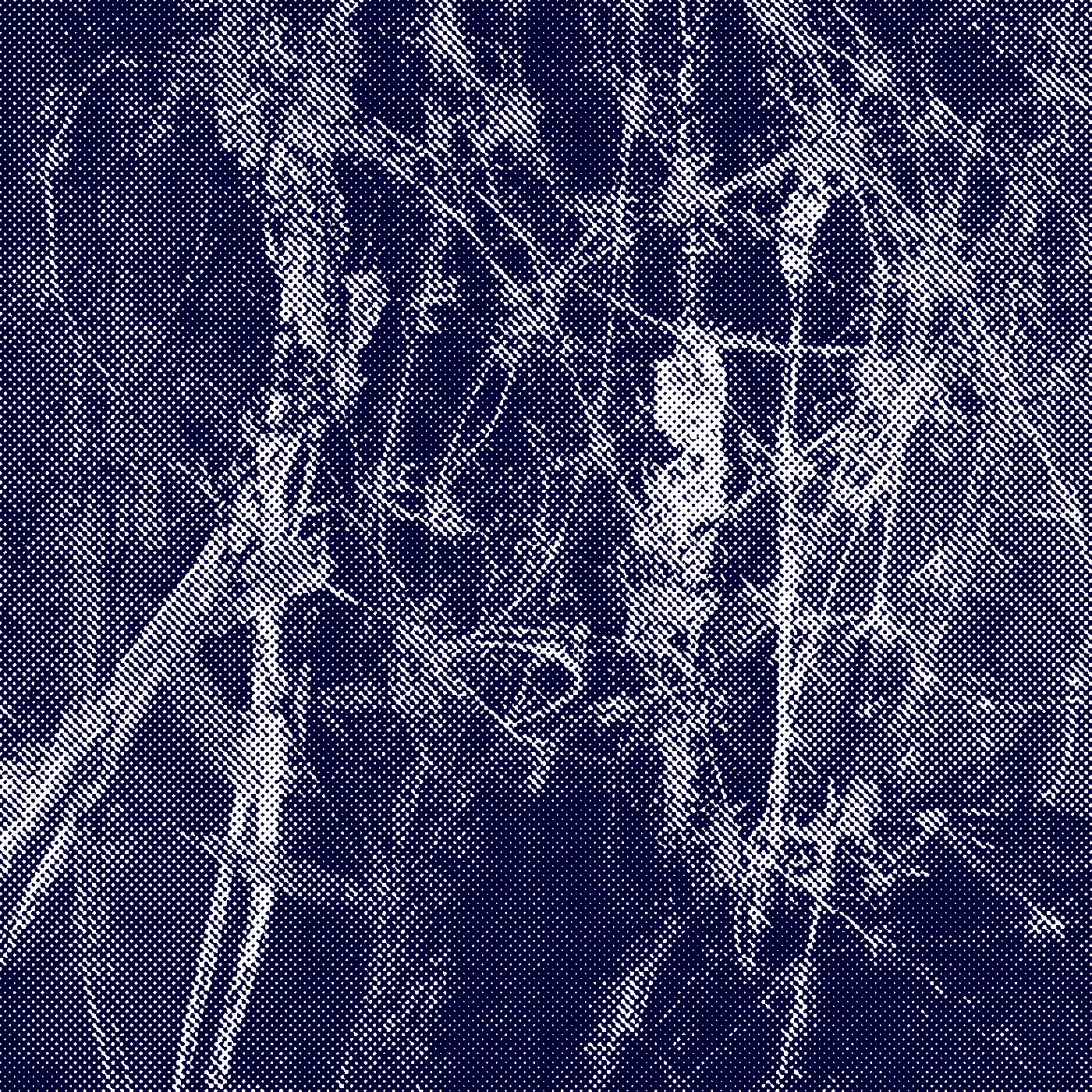
Photo: (Artist)
Constanza Dessain (SCT)
Paper, Photochemicals, Scottish meadow weeds (2024)
In the Skin of a Meadow is a series of bespoke prints, created by the artist Constanza Dessain as she developed a wildflower meadow in her homeplace in the south of Scotland. As piles of weeds, dock, sticky willie and ragwort are pulled in midsummer before they go to seed. The terminology of the action itself is uneasy as ‘invasive species are removed to benefit ‘native flora’. Their vegetative bodies are thrown over one another, tendrils lie over tendons in knots that are lifted and dumped along the plot’s margin. Transformed into prints, the plants release an image of themselves as their sap bleeds into the light sensitive chemicals. Both on the page and at the meadow, creation is dependent on the form of some things being undone.
Visual artist Constanza Dessain takes the shape
and morphology of landscapes to create improvised prints that
reflect on ecological entanglement, practices of landscape repair
and the flux of place. A PhD researcher at the School of Arts, at
the University of West England, Bristol and senior tutor at the
Royal Drawing School, London, she currently lives and works in rural
Scotland, where her practice-based research explores the interplay
of touch, time and early photography.
https://constanzadessain.com
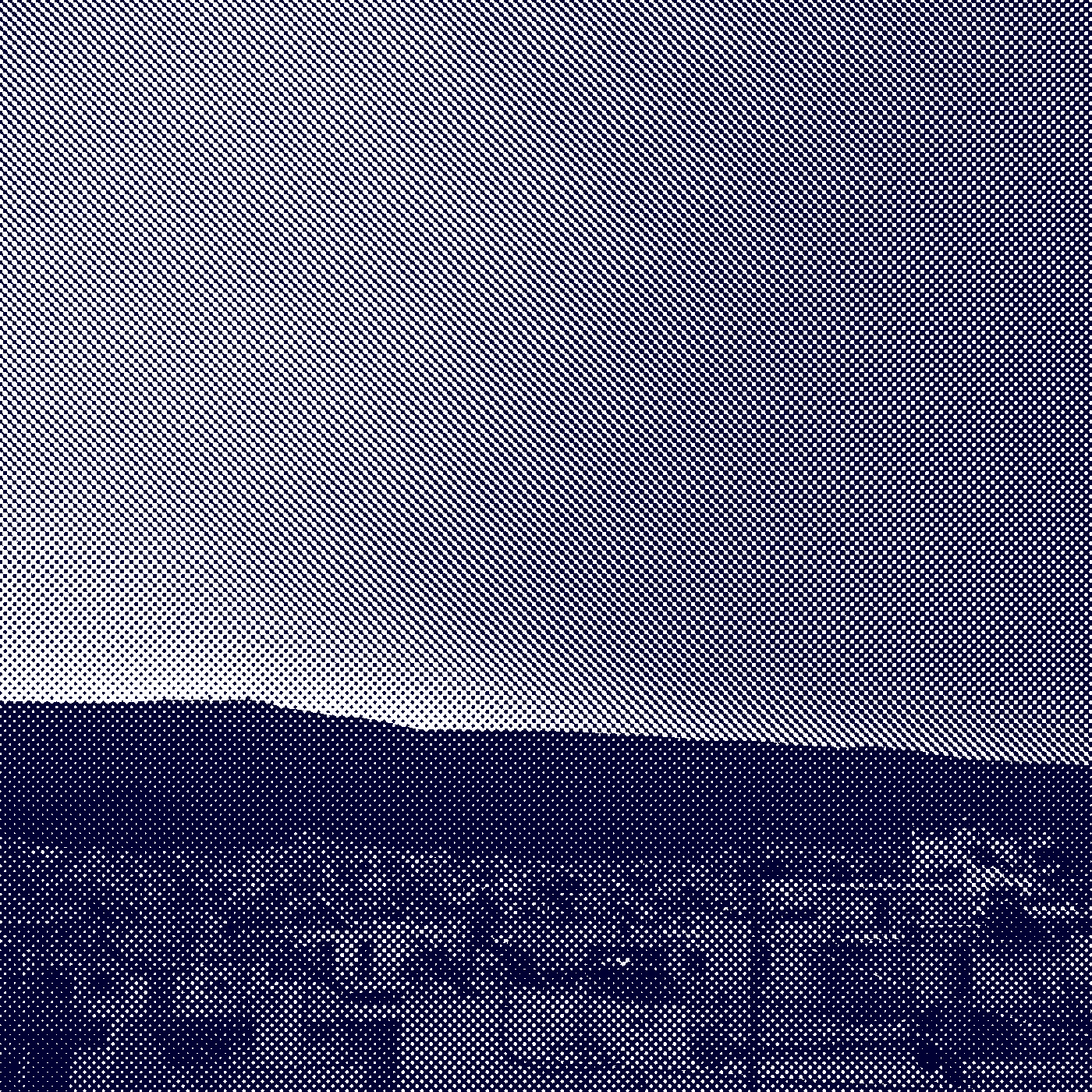
Photo: (Artist)
Faidon Papadakis (GR/FI)
Digital Photo Print (2024)
Each year, northward winds carry vast plumes of Saharan dust across the Mediterranean. These ochre-coloured clouds tint the skies and coat the white buildings of cities like Athens, leaving a fine, desert-born film on every exposed surface. This dust however, carries more than just colour. It transports microbes of the genus Rhizobium, a group of bacteria that form symbiotic relationships with legume plants.
How plants “recruit” such symbiotic microbes remains only partially understood. Biologists describe the process as “regulated infection,” a term that hints at the evolutionary history of once-hostile invasions transformed into mutually beneficial relationships. In legumes (plants of the Fabaceae family), interactions with Rhizobium culminate in the formation of root nodules. These nodules host bacteria that convert atmospheric nitrogen into forms the plant can use—a trade of nutrients for sugars in a tightly co-evolved partnership.
A Rhizobium bacterium within a lentil root nodule in Athens may have once drifted across the sea from North Africa. Carried first by Saharan winds, it might later have lodged itself in a seed, only to return to the air again. Simultaneously rooted within the intimate structures of a plant and carried over continents, such microbes challenge our notions of scale, of individuality, of selfhood.
Faidon Papadakis is a researcher based at The
Centre for the Social Study of Microbes (CSSM), at the University of
Helsinki. His interests lie in urban gardening, composting, soil,
multispecies ethnography, interdisciplinary methods and posthumanist
theory. His doctoral research explores the forms of knowledge and
understanding that emerge in urban garden settings between
gardeners, plants and microbes.
https://www.socialmicrobes.org/people/faidon-papadakis
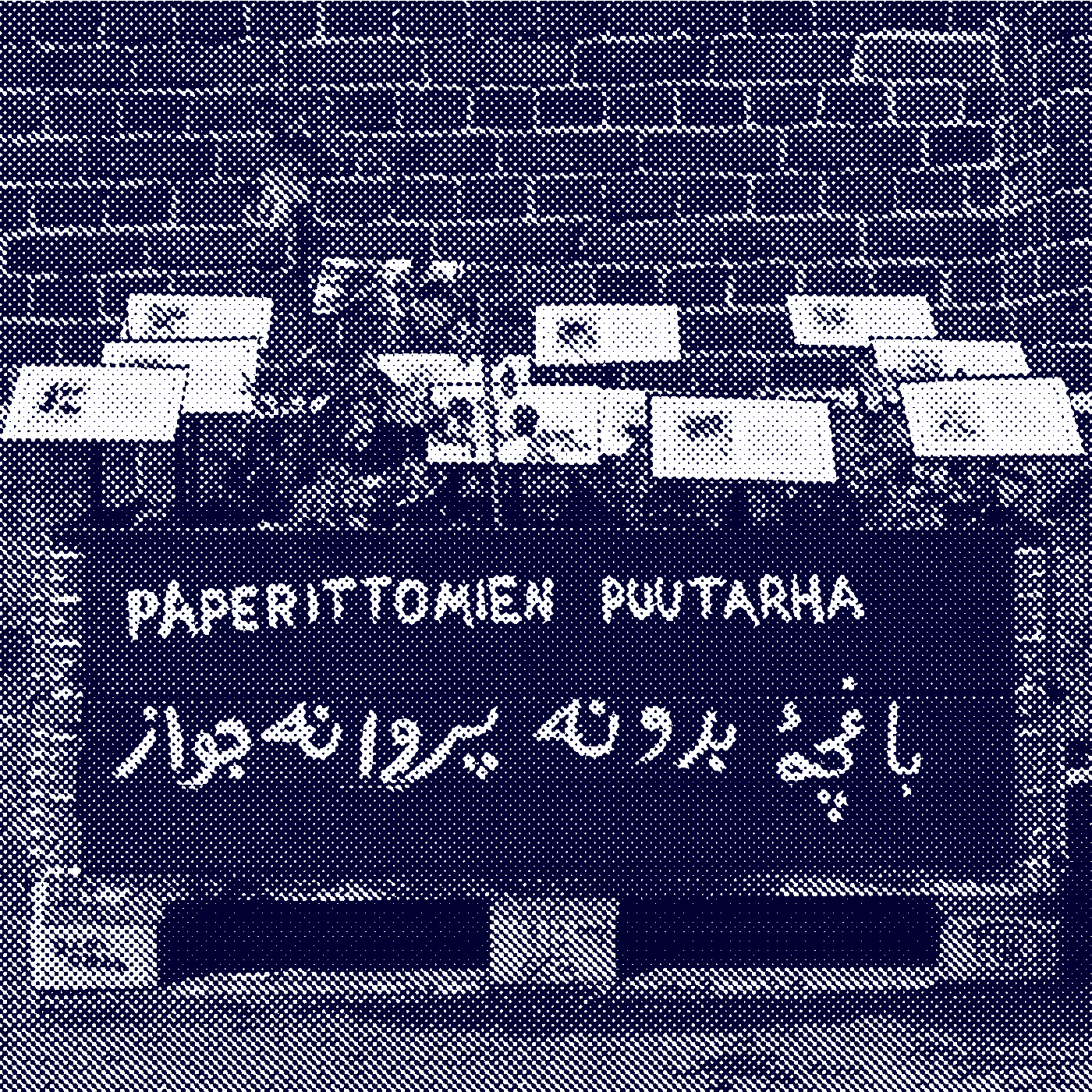
Photo: (Artist)
Kalle Hamm (FI) & Dzamil Kamanger,
(IR/FI)
Pot garden, book and drawings (2013)
Similar to many countries laws and legisation, the Finnish Food Safety Authority requires a phytosanitary certificate akin to a health certificate for all seedlings and pot plants, when they are imported to Finland from outside the EU. The certificate assesses the biosecurity risk of the plant, which accesses whether the plant is carrying pests or diseases. On import, the certificate must be presented, inspected and approved.
Cut flowers are often exempt from requiring a phytosanitary certificate because they are considered low-risk in that they no longer pose a significant biosecurity risk. Beyond such risks, cut flowers signify something special, with their aesthetic value and presentation, often used to mark an occasion or event. In Finland, a person can carry up to twenty cut flowers ‘into’ the country without questions. Drawing an analogy to how Immigration Service requires appropriate documents from persons entering the country, including how staying without proper authorization, is referred to as the undocumented.
Garden of the Undocumented (2013) shares the stories of fourteen plants whose native soils lie outside of the EU. Imagining the story of each plant from a first-person position, the selected plants include a mix of those imported from areas where they are native and some of them have been introduced to Finland, by humans. Each plant story acts as a metaphor not just for undocumented immigrants but also speaks to how humans control access, privileging those with perceived high value, specialist skills, connections or wealth, as acceptable, over others who are not.
Having originally met, in 1999 when working in a Helsinki pizzeria, since then Kalle Hamm & Dzamil Kamanger have been collaborating on a variety of public works and artistic projects. Common themes within their work focus on multiculturalism through the global and interrelated movement of plants, goods and people. In keeping with contemporary posthuman perspectives, that destabilise human-only, anthrop- and zoocentric certitude, Hamm and Kamanger’s longstanding exploration on the topic of gardens and the everyday lives of plants, nods to what the philosopher Michael Marder has referred to as plant-thinking and vegetal mindfulness, with the artists viewing plants as active, conscious agents in their environments and in their collaborations with plants. beelsebub.org
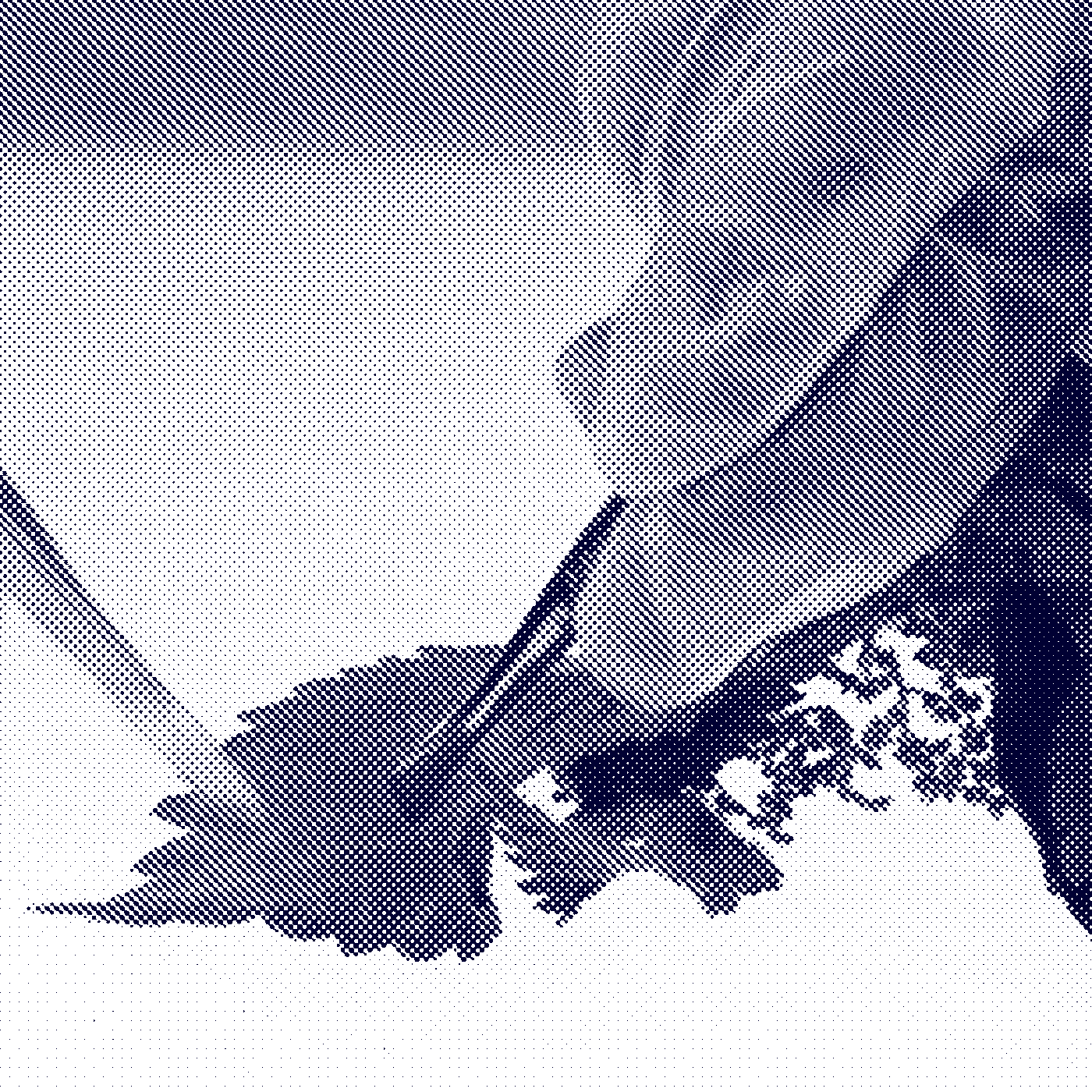
Photo: (Artist)
Kalle Hamm & Dzamil Kamanger
HD PAL,16:9, 5”43 min (2014)
Removing Defences is the documentation of live act, where defensive hairs of the nettle are removed and amplified. Questioning the idea of plants being mute and senseless beings without feelings. Audio recorders connected to the nettle with a stereo cable, record the electrical charge of liquids running inside the stem of the nettle. Changes in the electric current are converted into sound, rendering the sensitivities of the plant, audible for the human ear.
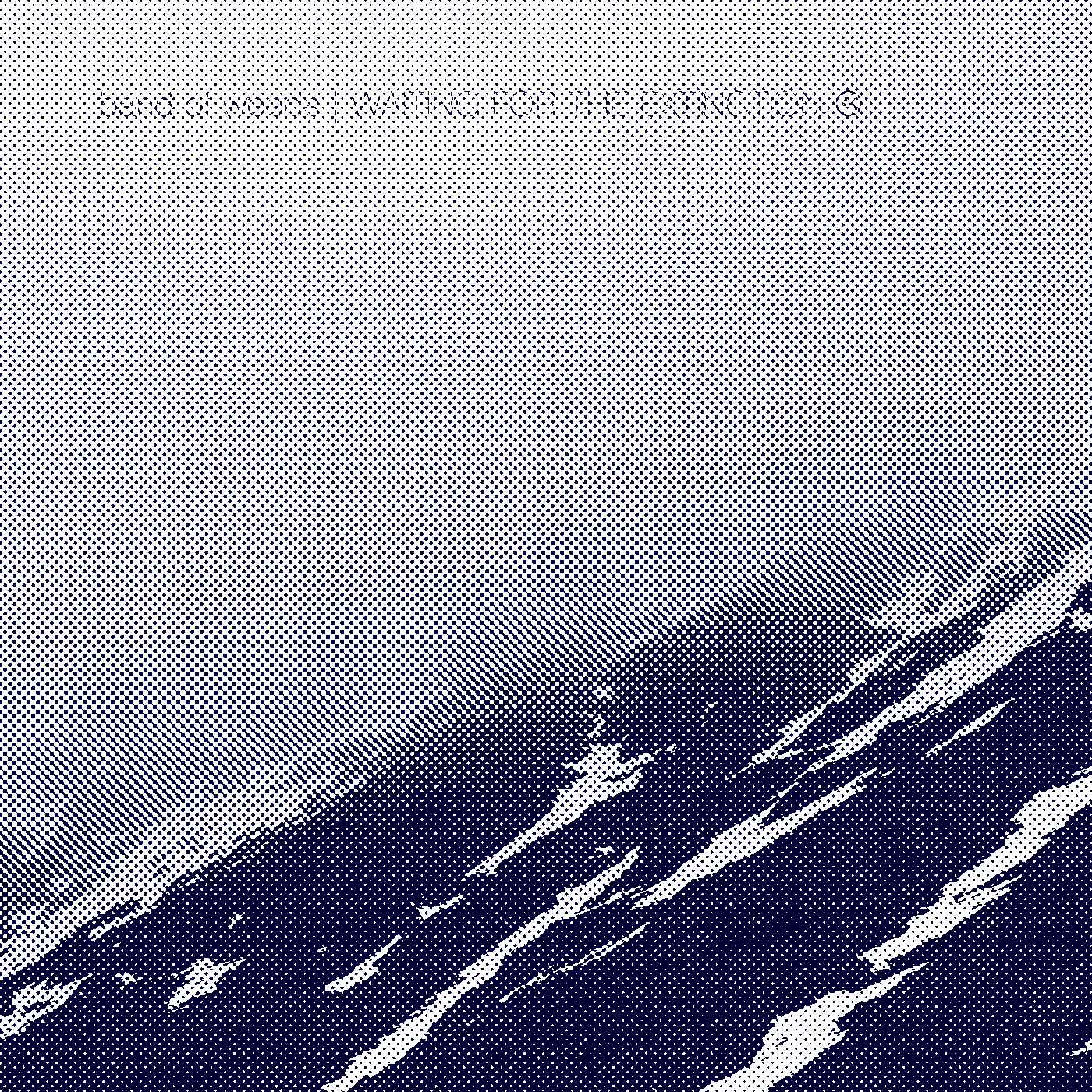
Photo: (Artist)
Kalle Hamm, Dzamil Kamanger, Lauri Ainala, Hermanni Keko
and Anniina Saksa and various plants
EP Vinyl, Other Than Human (2017)
LP Vinyl, Waiting for Extinction (2019)
In 2015, Hamm & Kamanger conceptually founded the sound collective Band of Weeds with ‘band’ members featuring different plants, alongside humans Lauri Ainala, Hermanni Keko and Anniina Saksa. Working with the Soviet botanist Ivan Gunar, plants perform in the band, through the sonic transposition of the ionised liquids that run inside of plant tissues and the associated changes in their electro-magnetic field, which are converted into sounds that humans can hear.
Copies of Band of Weeds LP, “Other Than Human” (2017), and the EP “Waiting for Extinction” (2019), will be available in the gallery to listen on headphones.
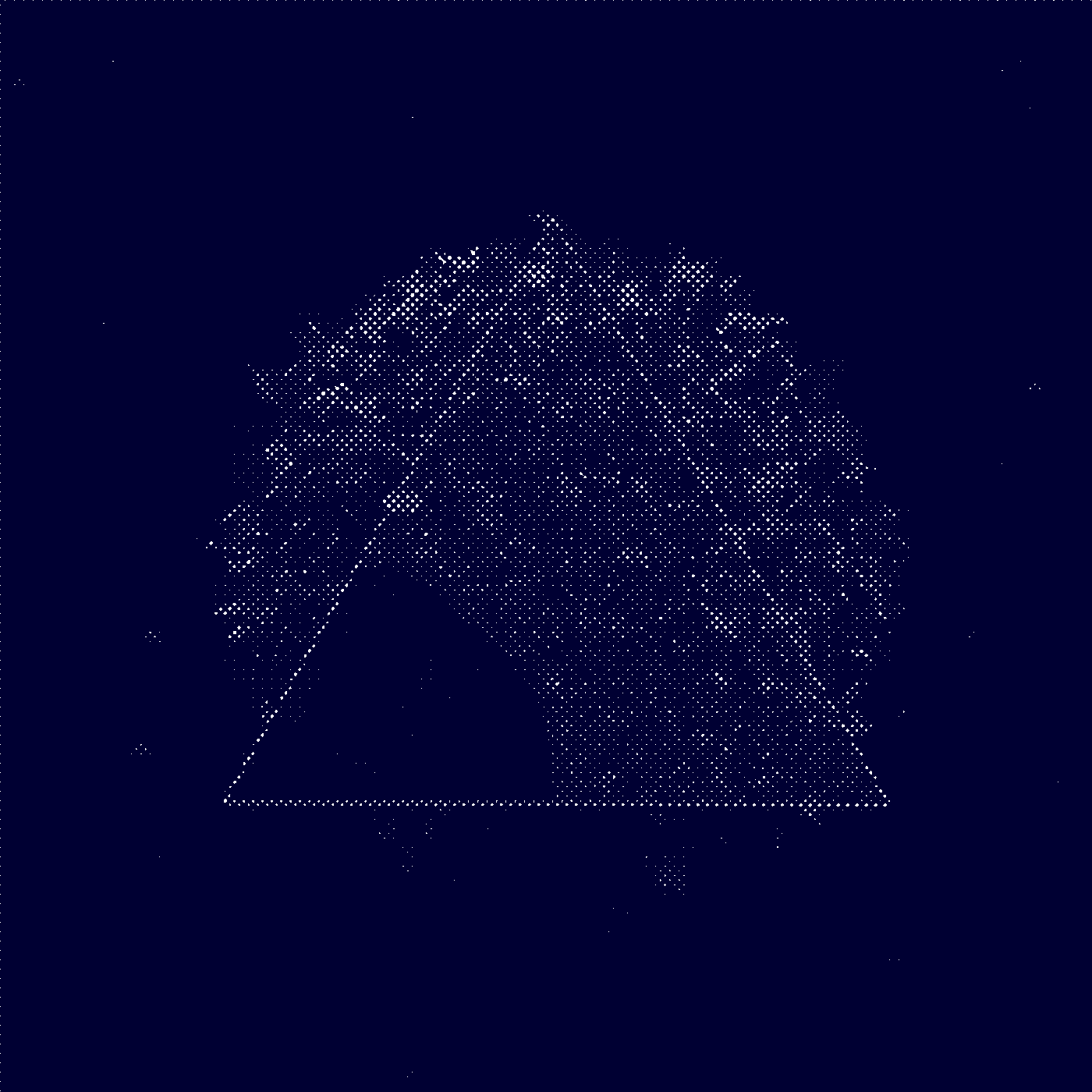
Photo: (Artist)
Kasia Molga (UK/PL) & Scanner (UK)
Video documentation, Full-HD, 9’56 (2018)
By the Code of Soil emerged from the GROW Observatory programme (2016-19), a European citizen science project, that used low-cost soil sensors to collect data on soil moisture, temperature, and light levels. Aimed at empowering communities to monitor their soils and contribute to environmental research, particularly satellite data. As part of this project, digital artist Kasia Molga and the British electronic musician, Robin Rimbaud aka Scanner drew on the soil data captured from the moisture sensors, as well as the flight path of the European Space Agency’s flagship satellite, Sentinel-1A, which passes overhead twice a day and captures data such as forestry, agriculture and weather conditions to support climate prediction modelling. As the satellite passed over the audiences’ location, the artwork appeared on their computer screens.
As the art work was based on data that was constantly generated, the graphic and sonic form the artwork took on the screen changed each time. The video work presented at KUBU is an artefact of this durational work. Viewed as speculative audio-visual and spoken word narrative, it considers what it means to speak on behalf of soil.
Kasia Molga (UK/PL)
Working with environmental and biological data, Kasia Molga creates
multisensory interactive and immersive situations, performances and
audio-visual animations, that reflect on what we mean by “nature”
and our relationship with it. Defining her position as that of a
design fusionist, her work explores how as humans, we can speak with
and on behalf of nature. In 2013, along with Erik Overmeire and Ivan
Henriques she co-founded World Wilder Lab ocusing on inter- and
intra- species communication. World Wilder aims to facilitate
artistic expression for biological entities and natural systems.
Prior to that she worked for several years with the collective
Protei, a group of international artists, designers, engineers,
scientists and sailors creating Open Hardware technology for the
ocean.
https://www.studiomolga.com/
Robin Rimbaud (Scanner) (UK)
Robin Rimbaud aka Scanner traverses the experimental terrain between
sound and space connecting a bewilderingly diverse array of genres.
Since 1991, he has been intensely active in the field of
contemporary electronic music and sonic art, producing numerous
concerts, installations and recordings. He regularly collaborates
with artists, musicians and creatives who are exploring new
directions and has worked with choreographers and dancers including
Wayne MacGregor, and Merce Cunningham, visual artist Mike Kelley,
fashion designers Steve McQueen, Stella McCartney, and musicians
such as Laurie Anderson and Pauline Oliveros amongst others. His
most recent new album, Contrary Motion (2025) released this year is
a collaboration with Steven Stapleton, otherwise known as Nurse with
Wound.
https://scannerdot.com/
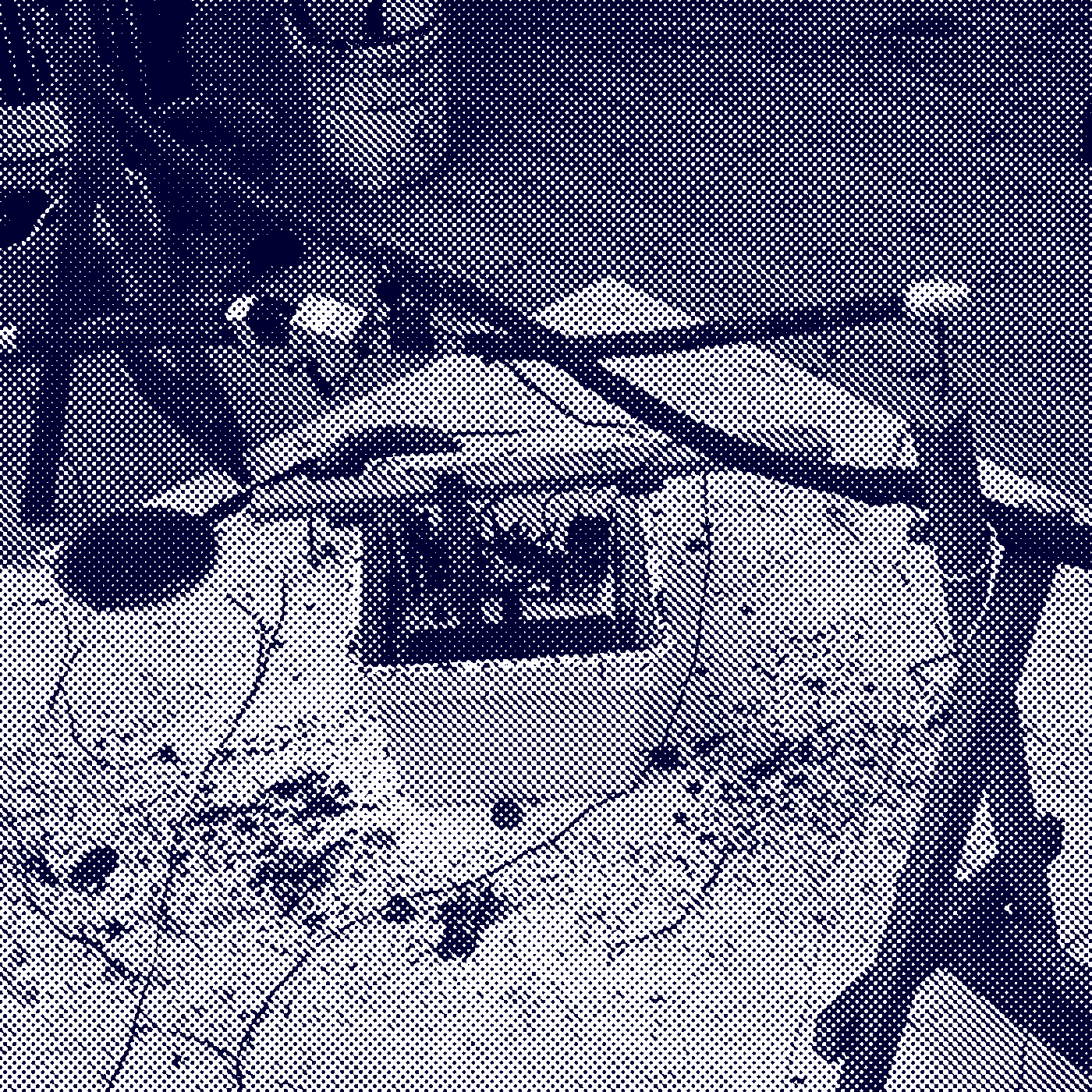
Photo: (Artist)
Paul Granjon (UK/FRI)
A temporary machine made of mud, sticks and recycled
electronics, 2020-
Mud Machine (2020–ongoing) is a series of temporary machines crafted from mud, sticks, and recycled electronics by French Welsh artist Paul Granjon. Each Mud Machine takes on a unique form, shaped by the local soil conditions and in collaboration with others through the collection of regional materials and the dismantling of electronic waste (e-Waste). These machines are kinetic creations that embody Granjon’s long-standing interest in how playful, hands-on approaches to making can challenge our understanding of technological complexity. Mud Machine highlights the labour and effort required to replicate the very earth beneath our feet, shedding light on the materiality and energy that is often overlooked in our perceptions of technology.
Paul Granjon’s work explores the co-evolution of
humans and machines through live performances, exhibitions,
participative events and academic publications with his current
practice focusing on creative low-technology, participation and
ecology. Since the 1990s, his work has been exhibited extensively
and in 2005, he represented Wales at the Venice Biennale 2005 and is
known for his pedagogical and playful interventions and research
into creative low-technology.
https://www.zprod.org/zwp/
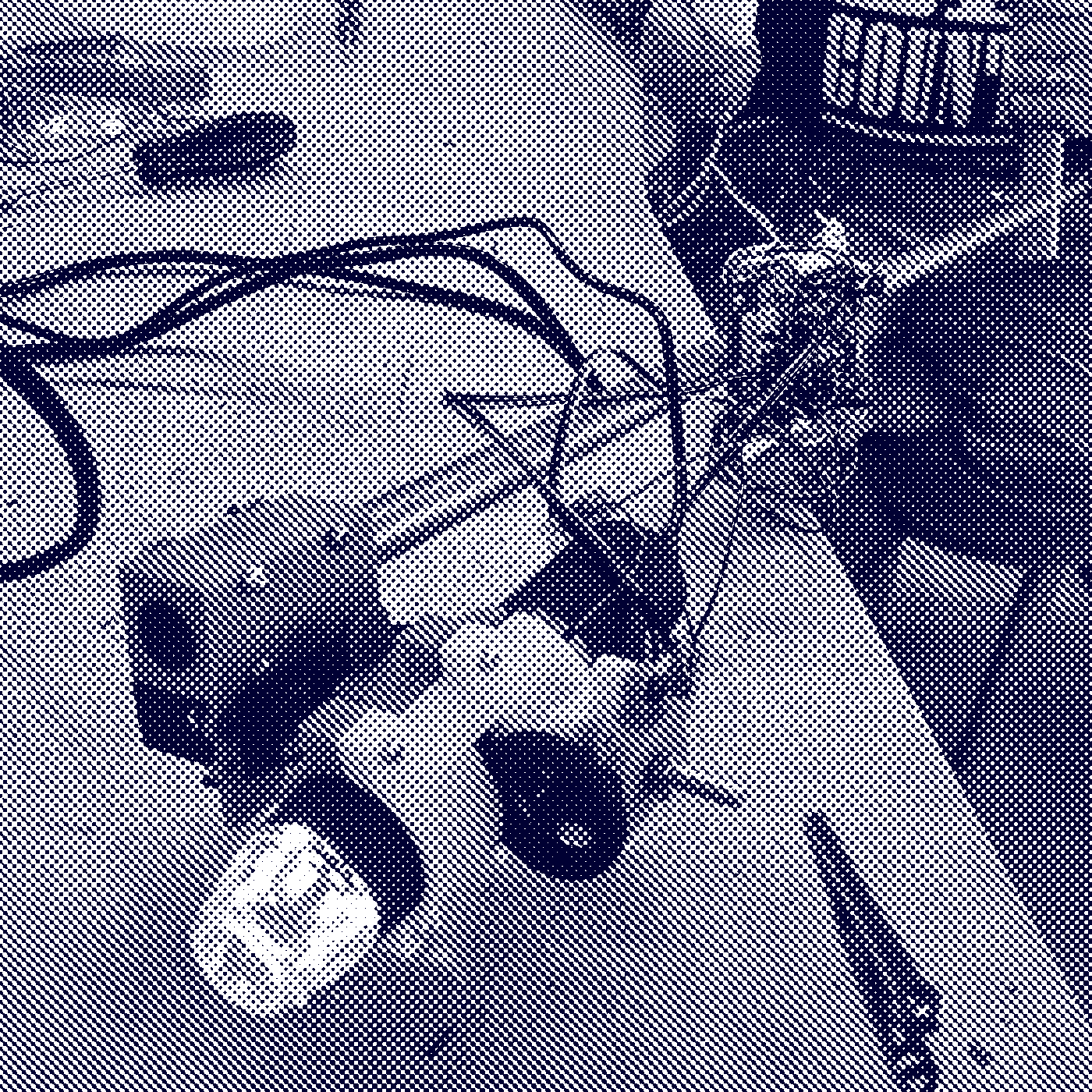
Photo: (Artist)
Paul Granjon, Knowle West Media Centre & Ruth
Hennell
Video documentation, Full-HD, 3’17, Digital Photo and Macroscope
Prototype (2023)
Garden Lab Whispers explored questions of access, engagement and participation in community gardens, where mobility and access is often an issue. Created in collaboration with the artist Paul Granjon, members of the community media centre Knowle West Media Centre (KWMC) in Bristol and local disabled residents, including the designer and accessibility advocate Ruth Hennell. Outcomes of the process led to the co-creation of early stage prototypes and documentation of the collective process.
Knowle West Media Centre (KWMC) is a community-led arts and technology charity based in South Bristol, UK. The centre uses technology and the arts to support positive change in the community, focusing on developing skills, creating digital infrastructure, and fostering creative expression. Running for over 25 years the centre is known for its pioneering work, and also operates “The Factory,” a digital making and training space that provides accessible creative digital opportunities. https://kwmc.org.uk/
Ruth Hennell is a designer, accessibility advocate and researcher working from lived experience. https://www.instagram.com/therehn/

Photo: (Artist)
Magz Hall (UK)
Potted plants Copper Coils, (2024-) Print of the
Etching. A machine for perpetual electrified gardens. Unsigned.
Published in Benjamin Martin’s General Magazine (London,
1755)
Electroculture is an experimental gardening technique that uses highly conductive metals like copper to absorb electricity from the air and the earth and transfer it back to plants. Drawing on some of the same principles as the engineer Nikola Tesla’s and other early radiographers used in their wireless energy transmission experiments. Coiled copper wire spirals act like an antenna by passively harvesting atmospheric electrical, which is transmitted back to the plants. This technique used to aim at promoting plant health and growth. In the early 1900s the French scientist Justin Christofleau (1925) published his findings on the technique, which brought wider attention to the technique, which is now used with varying degrees of success by gardeners and growers.
Following electroculture designs, Magz Hall connects the practice to her long-standing exploration in radio art practices. To create a bespoke set of copper structures, whose design is influenced by radio transmitter coils. The coils will be used to support potted plants that will sit in the Kubu garden. Plants selected for this garden have been chosen for their pollution cleansing properties in partnership with Kubu’s founder and gardener Sari Kippilä. Alongside the garden, an 18th century etching of the electroculture designs will be on display in the gallery.
Sound artist Magz Hall is known for her work in radio art, expanded radio and sculpture, wireless technology across the spectrum and podcasts. She successfully lobbied for community arts radio in the UK and was a founder of London arts station Resonance FM. She established Radio Arts an independent artists’ group who promote radio as a site for creative experimentation in 2001. A lecturer and researcher at Canterbury Christ Church University. She has a practice-based PhD in expanded radio art from UAL (2015) and was awarded an Oram Award for her expanded practice to date. https://magzhall.com/
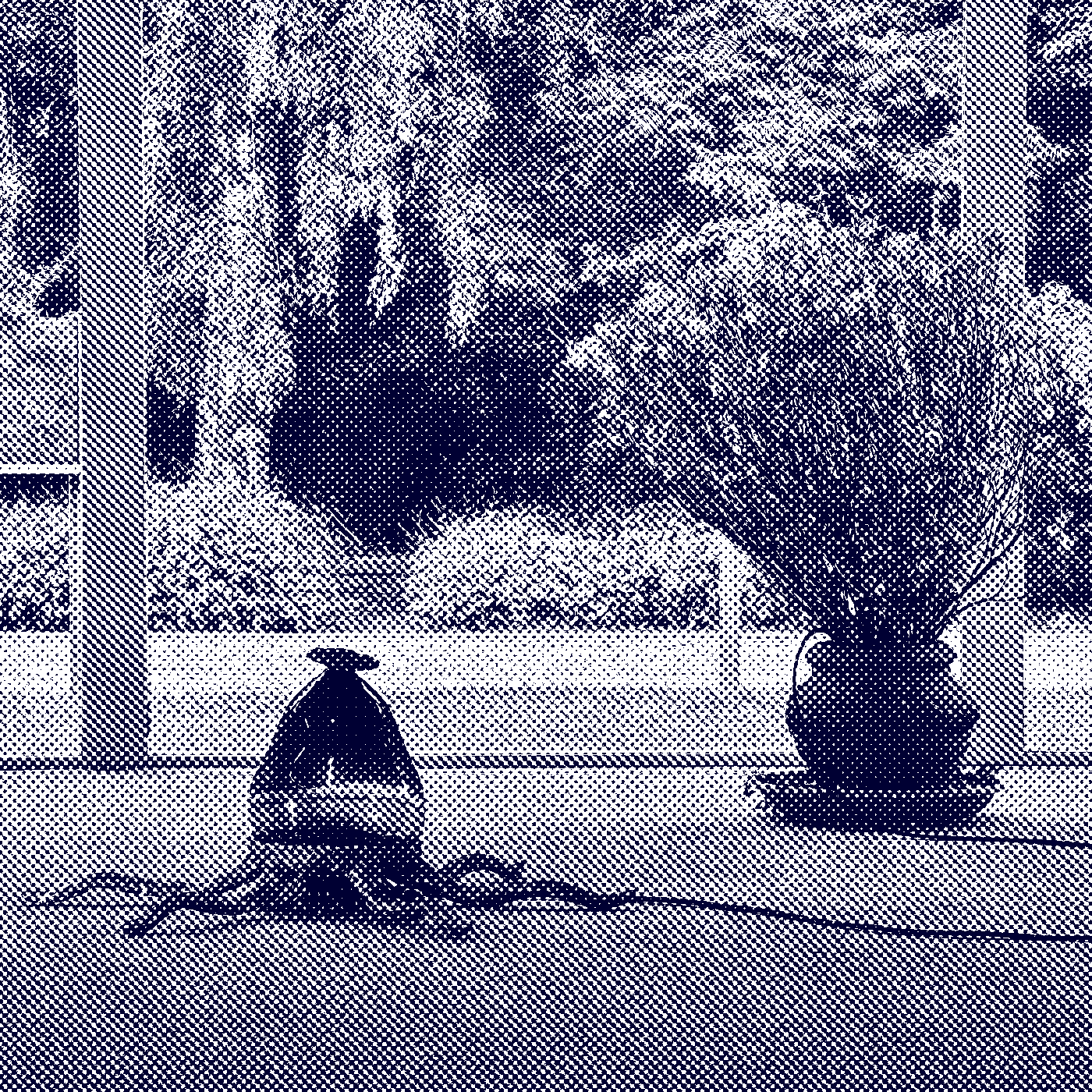
Photo: (Artist)
Teemu Lehmusruusu (FI)
Sonic Sculpture in glass, bronze, electronics (2023)
Pulse is a sonically resonating bronze and glass sculpture, through which moisture and temperature changes in the soil are sonified into pluses that reflect the soils condition.
Designed to be site-sensitive and adaptable for indoor and outdoor settings. The sculpture’s aesthetic, creature-like form, moulded in glass and bronze, creates a living entity that responses to soil moisture and temperature flucations. This data, collected through sensors, cables and switches, activates a bespoke variable sine wave sonic generator. Whereby differences in the sound generated relate to the soils condition. The drier the soil, the faster the sonic pulse or beating. In extreme drought, a more soothing drone-like sounds turn into a type of stress signal, while in completely flooded soil, the beating becomes flat, like a vanishing heart rate.
Teemu Lehmusruusu is an artist based in
Helsinki, who also operates from Kemitoön/Kemiönsaari island,
Finland, where KUBU is located. His takes the form of long-term
interactions, dialogue and field engagements with regenerative
farmers and soil and climate researchers. Through such partnerships
he seeks to foster a more multimodal and sensorial relationship with
soil phenomena, especially in agriculture and forestry. This has
manifested in a variety of public and mixed media installation,
sound and performance based works, as well as written texts and
publications. Alongside his artistic practice, Teemu is carrying out
doctoral research at the Aalto University School of Arts, Design and
Architecture and is a member of the Puistokatu 4 research
community.
https://teemulehmusruusu.com/

Photo: (Artist)
!Mediengruppe Bitnik (DE/CH)
Rasberry Pi Computer, Open Source software Shareboxx, Router,
Mini-Display Screen, custom software. Video documentation, Full-HD,
5’21”. Wall print, furniture built from recycled wood. Build and
Install: From 15-18th July as permanent library
Located on the Croatian island of Vis, ISSA - The Island School for Social Autonomy is an experimental school that aims to cultivate ways of living, learning, and teaching together, as well as prototype how to live a “good life” in the age of extinction. The school’s approach is rooted in social autonomy, a political strategy and model for social organization that emphasises the ability of individuals to function as cooperative group members, making autonomous decisions through mechanisms of collective deliberation.
The focus on collective deliberation and what it means, to practice how to live together, complements the underlying values and approach that sits at the heart of KUBU. With ISSA and KUBU located in rural, island contexts the question of how such work is activated in spaces and places that sit outside the heightened potentiality of urban densities creates further common ground.
As part of our summer residency !Mediengruppe Bitnik will build on the foundations of the ISSA digital library that was created in 2024, which was set up to store “how to” pamphlets, texts and other materials including shadow libraries such as UbuWeb. This will be achieved through a three-day open access workshop, where participants can sign-up for free, drop-in sessions in which they’ll learn the processes behind setting up the library.
!Mediengruppe Bitnik is the collective name for
the artist duo Carmen Weisskopf and Domagoj
Smoljo. Since the early 2000s they have been creating
contemporary art works on and with the Internet that expand into
physical spaces, through the manipulation of physical objects and
artefacts.
https://wwwwwwwwwwwwwwwwwwwwwwwwwwwwwwwwwwwwwwwwww.bitnik.org/

Photo: (Artist)
Winchester School of Art (WSA)
Online research visualisation
Bio-DIVERSITY is a collaborative inquiry between BA(Hons) Graphic Communication students at Winchester School of Art, University of Southampton, and the Archival and Records Department at the Royal Botanic Gardens, Kew. The project allowed graduating year students to explore Kew Gardens extensive botanical archives to uncover hidden plant histories that reveal some of the harmful effects of colonialism and historical exclusionary practices. Students visited Kew and looked at records and images from the 19th and early 20th century which depicted instances of past colonial attitudes towards indigenous peoples and the plant knowledge they possessed.
Winchester School of Art (WSA) is a one of the
UK’s leading centres for art and design research, education and
knowledge exchange. Situated in the heart of Winchester city in
south of England, it offers courses and degrees in studio art, game
design, cultural leadership, digital media, creative technologies,
curating, design, fashion and textiles. The BA Graphic Communication
course focuses on design for good. Each year graduating students
work on an archival project, with this year’s project taking place
in collabration with Royal Botanic Gardens, Kew, in England.
https://www.biodiversitywsa.com
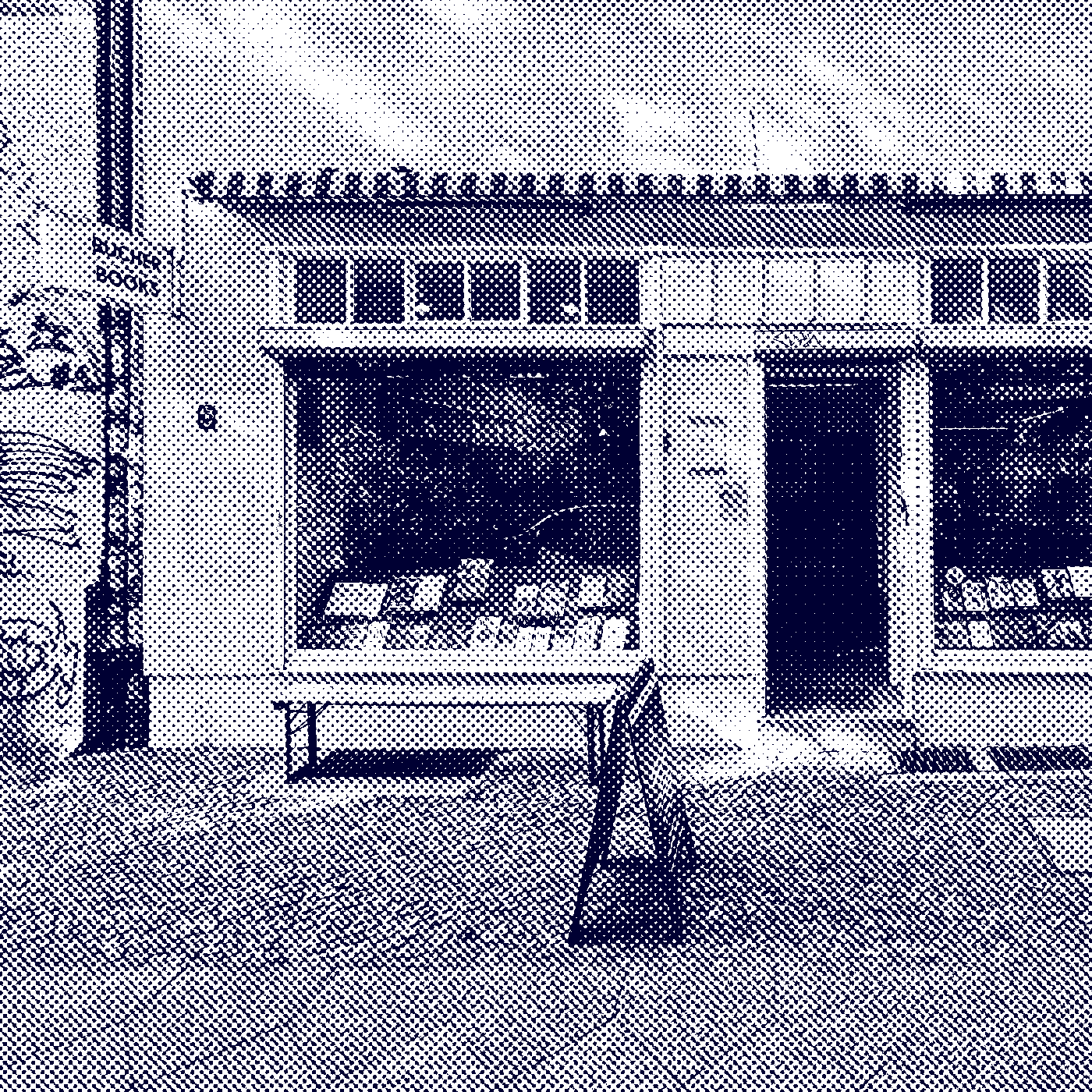
Photo: (Artist)
Zabriskie (IT, CH)
Pop-up bookshop in KUBU (2025)
As part of The Garden and The Hedge, we have selected in partnership with Zabriskie - an independent bookstore in Berlin specialising in sub-cultural and natural phenomena a collection of books relating to the theme of the programme. Books selected will be available to buy at KUBU’s shop and through the Zabriskie shop website. With a copy of each book also available to read onsite at the KUBU public library.
Established in 2013, with a focus on English and German speaking publications the Zabriskie bookshop’s selection mirrors the personal interests, preferences and passions of the owners (Lo rena Carràs and Jean-Marie Dhur) alongside selling books and magazines, the shop regularly organises readings, book presentations, walks and musical events.
Food of the Gods: A Radical History of Plants,
Psychedelics and Human Evolution
Terence McKenna, 1992
A Hedgerow Cookbook
Glennie Kindred, 2000
Let’s Become Fungal! Mycelium Teachings and the
Arts
Yasmine Ostendorf-Rodríguez, 2023
Plant Magic Issue 2: Weeds
Astarte Posch & Elisa Pieper (eds), 2024
Earth Craft Zine 5: Kindred Soils
Bakudapan Food Study Group & Erika Sprey (eds), 2023
A Pocket Foraging Guide: Pesto & More
Simka Senyak, 2023
How to Speak Whale: A Voyage into the Future of Animal
Communication
Tom Mustill, 2022
Awhām Magazine Issue #6: The Plants Issue
Mudar Al-Kufash, Ipek Erdöl & Janset Genel, (eds.) 2023
Silent Spring
Rachel Carson, 1962
Battlefield Earth
L. Ron Hubbard, 1982
The Light Eaters: The New Science of Plant
Intelligence
Zoë Schlanger, 2024
Do You Speak Flower?
Alexandra Midal, 2025
Greenhouse Stories: A Critical Re-examination of
Transparent Microcosms
Various Authors, 2024
On the Necessity of Gardening: An ABC of Art, Botany and
Cultivation
Laurie Cluitmans (eds), 2021
Hinterlands – Magazine for Rural Realities No. 3: The
Green Issue
Hanna Döring, Freia Kuper & Maike Suhr (eds), 2022
Pleasant Place – Compost (Issue III)
Lotte Lara Schröder (eds), 2023
Around the World in 80 Trees
Jonathan Drori, 2019
Around the World in 80 Plants
Jonathan Drori, 2021

Photo: (Artist)
Timo Kaukolampi (FI)
Soundtrack for a walking route (2025)
Established in 2021, Liminal Routes is an ongoing series of
mixtapes for landscapes. Created by Teresa Dillon and Rhys Ostler
Watts, the programme originally focused on creating opportunities
for walking together and listening to DJs mixes during COVID in
cityscapes. With each mixtape connected to a specific walking route
in a city location. This original concept has now expanded to
incorporate a series of ongoing commissioned works for listening to
compositions, mixes and new works by artists, composers, sound
makers and musicians. For KUBU’s summer programme 2025, Finnish
artist Timo Kaukolampi will create the first mixtape for a rural
landscape. Connecting to the themes of earth, Kaukolampi draws on
recordings of fungi and soil that were created on the island.
Listeners can stream the composition from the Liminal Routes website
or choose to listen to the mix, while walking in the landscape
around KUBU.
https://liminalroutes.net/route/kaukolampi/
Drawing on a myriad of influences from Krautrock, noise,
rockabilly, to hypnotic and minimalistic grooves, to ritualistic
chants and chimes, Timo Kaukolampi experimental
approach to making music, informs his multiple and varied projects
from live performance to compositions for film, theatre, dance and
live art. A self-taught composer, producer, the Helsinki-based
artist is best known as the founder and band leader for K-X-P (with
Tomi Leppänen, drums and Tuomo Puranen, bass, plus others) and Opel
Bastards (with Mikko Viljakainen und Tuomo Puranen).
https://kaukolampi.space/
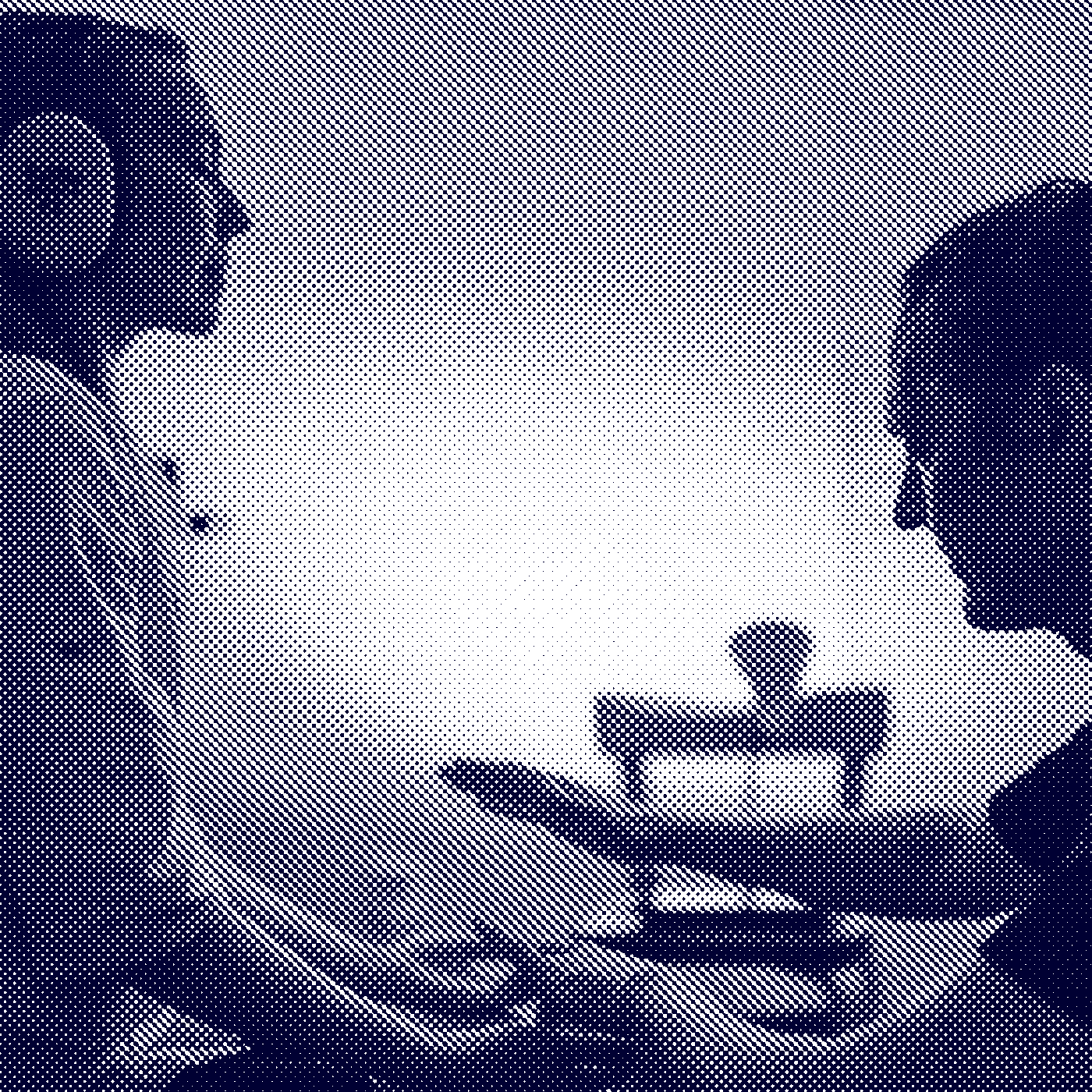
Photo: (Artist)
Antti Tolvi (FI)
part of Future ballet 700 Kimitoön
All our senses are ultimately based on our sense of touch. The sense of touch is the first to which life has begun to sense its surroundings. The body has slowly cultivated this sensation, through the sense of smell (we feel odor molecules in our nostrils), taste (we feel things in our mouth), hearing (we feel the vibration of the air/earth), sight (we feel amount of photons and their wavelength) etc. We even experience our emotions physically in our body. In other words, we are driven just by the sense of different touches.
In this minimal One-to-one concert, composer/sound artist Antti Tolvi plays this holistic instrument, e.g. with sounds, tastes, colors, qualitys, movements of air, timbre, touch and thoughts. Duration, 5-10 minutes.
Antti Tolvi is a sound artist and performer from Turku/Kemiönsaari. Antti has been one of the most significant figures in the field of experimental music in Finland since 2002. Antti has performed on three continents and has released 14 solo albums. In 2016-2025, Antti has held over 20 solo exhibitions and participated in several group exhibitions. Works have been exhibited at, among others, Sibelius Museum Turku (2023), Flow Festival HKI (2013, 2014, 2018, 2022), Rovaniemi Art Museum (2022), Helsinki Festival (2021), Musica Nova Festival (2021), Helsinki Biennale (Teemu Lehmusruusu working group 2021), Pori Art Museum (2020).
Fri 6 June 16.30-17.30
Julian Stadon
Join creative technologist Julian Stadon for this demonstration of TeleAgriCulture’s architecture, approach, and work to date. TeleAgriCulture is a bespoke weather and bio-sensing kit and community platform that facilitates a crowd/cloud data exchange network, promoting more sustainable engagements with food, agriculture, and ecology, through creative innovation, community engagement and scientific education. Founded in 2018 in Portugal, initial pilots were carried out in 2019 at Ars Electronica, in partnership with V2, Rotterdam and Stadtwerkstatt, Linz, with the platform officially launched at Vienna Design Week in 2020. Since then, the platform has carried out various international projects alongside developing educational formats for reimagining food ecologies and bio-digital sensory networks.
Julian Stadon is an Australian artist, designer, curator, researcher and educator. Julian has a background in Marine Biology, Fine Arts and Electronic Arts with his PhD research exploring augmentation aesthetics and data bodies. Founder of Dorkbot Perth and marart.org, he is currently the Programme Leader of Creative Computing at Winchester School of Art at the University of Southampton, in the UK. In 2018, he founded TeleAgriCulture, a community platform that aims to provide a crowd/cloud data exchange network to promote a more sustainable engagement with food, agriculture, and ecology, through creative innovation, community engagement and scientific education.
Age range: Most suitable to farmers, gardners and those working
professional with soil cultures.
Price: Free
Booking: None/Drop-In
Sat 7 June 11.00-14.00
Constanza Dessain
Learn how to use a cameraless method of making direct contact images using the sun and plant samples to make vivid blue cyanotype prints. Experiment with toning prints to vary the colours using simple ingredients such as tea wine.
Visual artist Constanza Dessain takes the shape and morphology of landscapes to create improvised prints that reflect on ecological entanglement, and practices of landscape repair and the flux of place. A PhD researcher at the School of Arts, at the University of West England, Bristol and senior tutor at the Royal Drawing School, London, she currently lives and works in rural Scotland, where her practice-based research explores the interplay of touch, time and early photography.
Age range: 5+ years.
Skill: Open to all. No prior experience needed.
Materials: Included with the price
Price: 10€
Booking required: info@kubu.fi
Sun 8 June 12.00-13.00
Shih Wei-Chieh
Shares outcomes from Shih’s residency at KUBU on Dye-sensitized solar cell (DSSC) technology in artistic production and network with other creative practitioners in the field of art and technology the summer program gathers in KUBU. Dye-Sensitized Solar Cells are a third-generation solar technology that is easy to manufacture and low-cost. Their electricity-generating mechanism relies on dyeing processes, which can be carried out using both natural and synthetic dyes. This project introduces the research process behind DIY solar technology and explores the intersection of dyeing techniques and energy production. It integrates DIY manufacturing initiatives and open-source culture into artistic expression, using solar glass materials to create a series of installations, including a greenhouse structure, a small book, and a photography collection on glass.
Age range: Most suitable to artists, designers and creative
technologists and those working professional in the field.
Price: Free
Booking: None/Drop-In
Shih Wei-Chieh (施惟捷) is an artist, maker, self-taught materials scientist, and activist who fosters international exchange for independent art events. He is pursuing a Ph.D. in the Interdisciplinary Art Program at the Graduate Institute of Applied Arts, National Yang Ming Chiao Tung University. Shih initiated the “Tribal Against Machine” project in Taiwan, which bridges traditional textile craftsmanship with the international e-textile community. He is actively involved in and facilitates international collaborations within independent art networks, establishing unconventional interdisciplinary connections. He organized the international online residency “Having Friends in The Future” for the National Taiwan Craftsmenship Research and Development Institute in 2020/2021. Additionally, his research project, Non-Governmental Matters, explores and investigates independent interdisciplinary art camps and gatherings, examining the positive impacts of such international and cross-disciplinary exchanges.
Sun 8 June 11.00-12.00 Try it
Sun 8 June 13.00-16.00, Make it
Marc Dusseiller
Expanding our senses through the observation of the wonderful underground life of soil.
Open to all enthusiasts, beginners or experts, artists, geeks and researchers alike, learn to build our own self-made microscopes using low-cost USB-cameras and basic construction materials with roving scientist and educator Marc Dusseiller. Marc will demonstrate how to make the microscopes, and guide the sampling expedition and share stories of how hackteria’s DIY microscopes have been shared around the globe and been implemented numerous times for education and artworks.
Marc Dusseiller is a transdisciplinary workshopologist, lecturer, artist, maker & cultural facilitator. For the last two decades, his technical expertise, interdisciplinary mindset and academic know-how in bio-nanomaterials has focused on nurturing Do-It-Yourself (DIY) science and art-science collaborations with a focus on lo-fi electronics and synths, open hardware for citizen science, bioart, biohacking and DIY microscopy. This has led to the curation of various festivals, workshops, public engagements, lecturers and residency programmes at community and institutional levels across Europe, the US and the Majority World. Central to Marc’s practice is the development of low-cost open hardware, educational kits and the development of interdisciplinary platforms for exchange on artistic research on life sciences. With key projects including the Centre for Alternative Coconut Research and Hackteria, Open Source Biological Art.
Age range: 12+ years.
Skill: No prior experience needed.
Materials: All provided by KUBU.
Price: 10€.
Booking required: info@kubu.fi
Sat 30 August 11.00-15.00
Paul Granjon
What is a Mud Machine you might ask? Well Mud Machine are temporary machines made from mud, sticks, and recycled electronics. Created using local soil, sticks, disused electronics and your imagination! Artist Paul Granjon has been making these machines as part of his art work and with communities for many years. Join Paul and learn about his machines and how to play with these elements and contribute to Mud Machine at the KUBU gallery.
Paul Granjon’s work explores the co-evolution of
humans and machines through live performances, exhibitions,
participative events and academic publications with his current
practice focusing on creative low-technology, participation and
ecology. Since the 1990s, his work has been exhibited extensively
and in 2005, he represented Wales at the Venice Biennale 2005 and is
known for his pedagogical and playful interventions and research
into creative low-technology.
https://www.zprod.org/zwp/
Price: 10€.
Booking required: info@kubu.fi
Tue 10 June 11.00-17.00
### Love The Poo
KUBU yard
Drop in and pick up for free on the 10th June, a valuable local produce, horse manure! Why is horse manure so good for gardens? Well it is an extremely good soil improver. Combined with stable bedding, such as hay, grasses or wood shavings or wood pulp, when it rots down it can be used as a mulch. But be warned! Fresh manure must not be directly used, as it can actually remove nutrients and scorch plants, the manure needs to rot down. To do this, add it to compost heaps or mix with a bedding material. The time it takes to rot down depends on the maturity of your compost heap and the bedding material used.
Thur 19 Jun 11.00-13.00
Merja Öhberg
In this workshop, you will learn the very basics of making a sauna whisk (in Finnish “vasta” or “vihta”). Tying birch branches into a bouquet doesn’t sound complicated, but there are a lot of regional or personal idiosyncrasies to it: When and how to pick the branches, if there are other tree species in the mix, how you lay the leaves, how and with what materials you tie it together and how you should use and store it. A well made whisk can be dried for the winter and will keep the form even after multiple uses. Every village in Finland still has a person who has this knowledge and skills in use. You will meet the one nearest to KUBU.
Age range: 12+ years.
Skill: No prior experience needed.
Materials: All provided by KUBU.
Price: 10€.
Book required: info@kubu.fi
Thurs 19 June 14.00-17.00
Aino El Solh (FI)
Tuning into the summer solstice frequencies and the midsummer bloom of plants, this workshop connects Finnish folk tales, with Traditional Chinese Medicine (TCM) and plants reproductive systems. Drawing on the old Finnish custom, where seven different flowers from a meadow are collected on a nightless night and placed under your pillow, so as to vision/dream your future spouse. Participants will gather wild and meadow plants from around the Kubu site, exploring their structures through microscopes, collective discussion, observations and meditations on plant reproduction, will be explored through a mix of printing and painting, and peer-to-peer learning.
Age range: 12+ years.
Skill: No prior experience needed.
Materials: All provided by KUBU.
Price: 10€.
Book required: info@kubu.fi
Visual artist and acupuncture practitioner, Aino El
Sol work addresses the efforts and temporal dimensions of
everyday care relations through collective enterprises and
configurations. This has manifested in a variety of visual,
performance and built environment projects, including the
transformation of abandoned spaces into habitable, cultural venues
(De Fabriek, Rotterdam), the establishment of hospitality
accommodation for independent artists and cultural works (Mrs
Blacks, Berlin) and the development of a self-sustaining,
eco-village in Lebanon. She is a member of the Berlin-based,
interdisciplinary group of international artists and cultural
producer, MATERIAL FANTASIES, whose autobiographical work and lived
experiences inform their work on contemporary feminist positions
addressing motherhood(s) in the arts. In 2021, on graduating from
the Heilpraktikschule in Selbstverwaltung (HPS), Berlin, El Sol
opened her acupuncture clinic in Helsinki.
https://www.instagram.com/aino_el_solh/
Sun 06 July 11.00-17.00
Sara Ilveskorpi (FI)
As a part of the KUBU outdoor development we build together a traditional hedge from willows beside the pollinator meadow and the greenhouse construction. You will learn how willow hedge attracts decomposers that release nutrients for your garden plants and provides shelter and habitat for many insects, fungi, and birds.
Age range: 12+ years.
Skill: No prior experience needed
Materials: All provided by KUBU
Price: Free
Booking Required: info@kubu.fi
Sara Ilveskorpi is a visual artist, art educator
and gardener. Her practice takes place on Nytorp Farm on the Island
of Kimitoön in Southwest Finland. Ilveskorpi considers her work
site-specific, where the unique ecology of the site is explored and
affected symbiotically. The main themes in her practice are
permanence, temporality, and flexibility. Ilveskorpi is a doctoral
researcher in Aalto University, School of Arts, Design and
Architecture. Her research focuses on the ontological and
philosophical questions of self-sufficiency, and self-sufficiency as
a living practice.
https://sarailveskorpi.com/
Sun 06 July 11.00-17.00
Local Participants with Jussi Puustjärvi
Over several months, we have been co-designing and co-constructing the KUBU Community Greenhouse. Learning how to design, set up and build a greenhouse from recycled materials under the guidance of a local carpenter Jussi Puustjärvi. The structure utilises old windows, bricks and other recycled materials. In Spring 2025, a prototype greenhouse will be built in the KUBU yard during the spring, with the aim to provide people with the skills to build their own greenhouse. The participants may use the KUBU greenhouse and a communal harvest celebration will be organized at the end of the summer program. The workshop series is part of the program for the 700th anniversary of Kemiönsaari and launches the first part of an ongoing series of outdoor facilities that will be designed for the KUBU site and local communities.
The KUBU community greenhouse will be constructed under the supervision of local carpenter Jussi Puustärvi. The design phase attracted a dozen locals from various professions.
Sat 12 July 11.00-17.00
Sun 13 July 11.00-17.00
Ronja Tammenpää & Marjut Nordberg
Plant dyes and natural inks is a two workshop (Part 1, Sat 12 July and Part 2, Sun 13 July), where you will immerse yourself in the world of colors obtained from plants. The workshop will teach you the basics of plant dyes, eco-printing on canvas with natural plants, and the production of plant inks and raw watercolors. Participants will have the opportunity to collect natural plants from the local area, experiment with raw watercolors found in the kitchen, and create their own plant-based paintings with homemade reed pens. Bring your writing instruments and, if you wish, your own natural light fabric (cotton, linen, silk, wool) for eco-printing.
Age range: 12+ years.
Skill: No prior experience needed.
Materials: All provided by Kubu.
Price: 10€.
Booking required: info@kubu.fi
Ronja Tammenpää is a Creative Sustainability Master of Arts student at Aalto University in Espoo. In summer 2024 she explored making inks and pigments out of wild plants at the university BioMakerStudio creating her own plant colour library. The artist is generally interested in creating daily use objects, such as arts supplies, using foraged natural resources. In her work plants are not materials but active collaboration partners with their own personalities and needs.
Marjut Nordberg is an Art and Creative Expression and Crafts teacher at the Finnish Diaconal College. Her teaching subjects also include promoting sustainable development, and therefore recycled and natural materials are a central part of all teaching. She is interested in dyeing with plants, eco-printing and experimenting with natural, non-toxic dyes as a possible alternative to plastic and chemical-based dyes/colorants. Making art can be a process that simultaneously strengthens the connection to nature and the knowledge of the surrounding nature for all involved.
Sun 27 Jul 13.00-17.00
Eisenia Fetida & Andrew Gryf Paterson
Vee-jaying (VJ) derives from the term disc-jockey (DJ), whereby two or more visual samples or inputs are mixed together to create a single, fluid image. Drawing on this practice, Paterson will create a prototype VJ system that visually reveals hidden processes of the Eisenia Fetida crew. The system will include the creation of a specially constructed bin equipped with infra-red or night-vision lighting to minimize disruption to the worms, while capturing their activity among the compost materials and other organisms. Using microcontroller(s) and mini-projector setup, the system can switch between viewing angles, apply real-time visual filters, integrate with open-source VJ software, to create dynamic, interactive projections. This system will be built during Gryf Paterson residency at KUBU, with outcomes demonstrated as a programme partnership with the Norpas Festival.
Andrew Paterson is a self-styled ‘artist-organiser’, cultural producer, educator, archivist and interdependent researcher. Originally from Scotland, but active in Helsinki, Finland, as well as Latvia, the Eastern Baltic Sea region and beyond. They pursue a participatory hybrid arts practice through workshops, performative events & storytelling; Association member of Pixelache and Bioart Society. Since 2016, Andrew has been composting and cooperating with Eisenia Fetida.
Eisenia Fetida or commonly in English as ‘manure worms’, ‘redworms’ and ‘red wigglers’ are ringed-segment earthworms that have adapted to live and survive in decaying organic material, rotting vegetation, and manure. Commonly used in domestic and industrial vermicomposting to break down organic matter. In English the name for a collection of worms is ‘clew’, which Paterson transforms into “crew”. This play on words alluding to Vee-Jaying (VJ) and Disc-Jockey (DJ) scenes, where groups of people aka crews, tend to work together to create the club night or disco.
Sat 16 Aug12.00-15.00
Sat 30 Aug13.00-15.00
Will LaFleur
0€, in English, Book your seat: info@kubu.fi
Educator, foodie and researcher Will LaFleur’s multipart workshop will focus on the DIY process of home-brewed, mead (honey wine). Using local honey and wild foraged herbs and berries, participants will learn the basics of DIY alcohol fermentation.
Part 1: Involves foraging wild herbs and berries to infuse the mead. Focus here will be on learning how to start the fermentation that turns honey and water into mead, including learning how to fashion wooden stirring sticks, so as to help kick start the wild microbes to ensure the yeasts to inoculate future batches of wine.
Part 2: As part of the closing weekend, taste, write and share reflections on making honey wine together.
Age range: 12+ years.
Skill: No prior experience needed
Materials: All provided by KUBU
Price: 10€ (covers both parts)
Booking required: info@kubu.fi
William LaFleur: Will LaFleur is an academic
interdisciplinary researcher with a background in anthropology and
global education. Outside of academia, Will has worked as a
secondary school teacher, and in the food and wine service. His
current research focuses on fermentation practices in Japan, Italy,
and Finland, with a focus on regenerative agriculture and foodways
practices, human-soil relations, fermentation, skilled care work,
and more-than-human labour in relation to circular and degrowth
economies.
https://www.socialmicrobes.org/people/will-lafleur/
Sat 16 Aug12.00-15.00
Sat 30 Aug 13.00-15.00
Maya Hey
10€, in English, Book your seat: info@kubu.fi
Leading expert in human–microbe relations and how we come to know microbial life in food settings, shares techniques for fermenting seasonally available foods creating your own year-round fermentation calendar.
Part 1: Learn how to lacto fermented vegetable materials and explain sensory cues to monitor.
Part 2: Create your own fermentation calendar that documents year-round fermentation projects to further pursue.
Maya Hey: Maya Hey is an expert on human–microbe
relations and how we come to know microbial life in food settings.
She holds degrees in dietetics, food studies, and communications and
has facilitated discussions and held workshops around contemporary
food and health issues in preschools, chemistry labs, culinary
kitchens, organic farms, food banks, and food markets. She leads the
group fff|food
feminism fermentation and is passionate about open education and
pedagogy.
https://www.socialmicrobes.org/people/maya-hey/
Sensory-Microbial-Vegetal Meshworks Workshop Series
Join researchers, educators and microbial advocates from CSSM, Faidon Papadakis, Will LaFleur, Maya Hey and collaborator Eline Tabak for a series of workshops that will run over August and form part of our closing weekend wrap up. The interrelated series of workshops will weave common concerns and tactics for living with soils, microbes, plants, and our interdependencies. Through practices of home-brewing, Sensory-Microbial-Vegetal Meshworks closes our programme by deeply connecting to our lively entanglements of soil and its importance for the future of our planet.
The Centre for the Social Study of Microbes
(CSSM)
An international hub for social scientists and artists conducting
research on human-microbial relations, CSSM aims to develop theory
and methods to better make sense of the complex relations between
humans, nonhumans, microbes, and their environments. As noted on the
centre’s site, there has been a boom of microbiome research since
the early 2000s. Microbes are vastly more abundant in the
environment and inside our bodies than previously thought. With
microbe deficits now associated with everything from mental health
to autoimmune diseases. There is also increasing awareness of
microbes’ vital role in different ecosystems and ecological
relations to the extent that global warming, soil depletion, and
biodiversity loss are associated with imbalanced microbial
ecologies.
https://www.socialmicrobes.org/
and https://www.socialmicrobes.org/people/
Our Friday Hybrid Conversations are held online and in-person KUBU. As lunchtime conversations, they will be held at KUBU gallery and online, hosted by The Garden and The Hedge curator Teresa Dillon. Booking is required for all sessions, with Zoom link sent once registration is completed.
Fri 6 JUNE 12.30-13.30
Drawing on his extensive knowledge and research into trees and plants, Jonathan Drori will share insights into what these species can teach us about life on Earth.
Jon Drori: is an author and experienced board member known for bridging diverse fields including science, culture, digital technology, media, and education. His books Around the World in 80 Trees and Around the World in 80 lants are international bestsellers, translated into over 20 languages. He is currently writing a children’s book on plant products, which will be published by Magic Cat. Prior to concentrating on this writing, Jon was the founding Director of Culture Online at the UK Government’s Department for Culture, Media and Sport, where he led award-winning digital arts projects and authored a key policy report on digital access and worked as an Executive Producer at the BBC (British Broadcasting Corporation). At the BBC, he produced over 50 science and engineering documentaries and helped launch pioneering educational services. As Head of Commissioning & Editorial Director for BBC Online, he oversaw commissioning across the organisation’s web platforms and supervised mass UK social-action campaigns for numeracy and computer literacy. An experienced board member, he has chaired and advised major institutions, including the Royal Botanic Gardens, Kew Gardens and is currently on trustee of the Raspberry Pi Foundation.
Fri 11 JUL 12.30-13.30
Histories and Imaginings of a Queer Trans Socialist Herbalism
This performance lecture takes researcher miha brebenael’s work on ‘socialist herbalism’, or the histories of herbalism in historically socialist spaces in the Baltic region, the Balkans and in Eastern Europe, as its starting point. The work builds on several historical materials published by the U.S.S.R. and the Socialist Republic of Romania, in the form of Atlases and collections of maps. The focus is on soil taxonomies, specifically working through the imagination of the soil category of the “chernozem” as a particular type of very rich soil and resource. This history is met by a queerfeminist method and creative practice with collaged images from educational materials found in the self-organised Residency and Project Space MASSIA (massia.ee) situated in rural Estonia, where miha has organised Socialist Herbalism Gatherings for the past two years.
miha brebenel is a Bucharest-born white queertrans based in London. Their long-term and expanding explorations are focused on the histories of internationalism and solidarity, intersections with disability, gender, critical plant studies, law, social and healing justice. They are a senior lecturer in Digital Cultures at Winchester School of Art, University of Southampton where they currently convene the MSc in Creative Technologies.
Fri 18 JUL 12.30-13.30
Developing cultural and artistic work in rural contexts
Sara Roberts is an independent curator known for exploring craft processes. Her projects include Hand to Eye (The Winchester Gallery), Setting the Scene (Crafts Study Centre, 2013), and Inundation by Laura Ellen Bacon (Ruthin Craft Centre, 2014). She curated The Chemistry Set (1993) on metal patination’s impact. Consultant curator for the Arts Council of Wales/National Trust residencies at Penrhyn Castle (2015–17), she co-curated What Colour is Metal? (2021–22), an international exhibition on colour in metalwork. Sara has worked with some of the UK’s leading cultural institutions, including the Imperial War Museum, British Council, and Mostyn, and contributed to the Wales in Venice initiative and Southampton’s 2025 culture bid. Alongside her curatorial practice, Sara is Programme Leader for the MA in Contemporary Curating at Winchester School of Art, University of Southampton, where her work focuses on supporting a new generation of curators to develop professional skills, critically situate their practice, and engage diverse audiences.
Fri 29 AUG 12.30-13.30
Conversation with artist Paul Granjon on his gallery installation at KUBU, Mud Machine and other soil based works.
Paul Granjon’s work explores the co-evolution of humans and machines through live performances, exhibitions, participative events and academic publications with his current practice focusing on creative low-technology, participation and ecology. Since the 1990s, his work has been exhibited extensively and in 2005, he represented Wales at the Venice Biennale 2005 and is known for his pedagogical and playful interventions and research into creative low-technology.
The Garden and The Hedge, marks the initiation of a more comprehensive residency programme for KUBU. Over the twelve week summer programme, our residents stay and live on site, creating new work or building on existing projects that will be shared during the programme.
Sun 8 June, 12-13.00:
Shih Wei-Chieh (施惟捷), Show and Tell
Sun 8 June, 13.00-16.00
Look at the Soil & Make Your Own Microscope, Marc Dusseiller
Sun 27 Jul, 13.00-17.00
Andrew Gryf Paterson & Eisenia Fetida aka Manure Worm VJ
Clew
Thur 5 June
18.30-19.30
Welcome Reception and Exhibition Opening at KUBU
20.30-21.15
Live Performance, Timo Kaukolampi
Fri 6 June
12.30-13.30
The Friday Hybrid Conversation with author and environmentalist,
Jonathon Drori
14.30-15.30
Liminal Routes Audio Walk, Timo Kaukolampi
16.30-17.30 TeleAgriculture, Show-and-Tell, Julian Stadon
Sat 7 June
11.00-14.00
Cyanotype Plant Printing Workshop, Constanza Dessain
11.00-14.00
Listen to the Soil, Drop in Station, Marc Dusseiller
Sun 8 June
11.00-12.00
Look at the Soil, Marc Dusseiller
12.00-13.00
Solar Panel Experiments Show-and-Tell, Shih Wei-Chieh (施惟捷)
13.00-16.00
Make Your Own Microscope, Marc Dusseiller
Tue 10 June
11.00-17.00
Love The Poo, Horse Manure for garden fertiliser. Pick Station at
KUBU
Thur 19 June
11.00-13.00
Saunavihta-workshop, Local expert
14.00-17.00
Bloom Workshop, Aino El Sol
Sat 05 July
15.00-23.00
Kiila Sound Day Excursion
Sun 06 July
11.00-17.00
Build A Traditional Willow Hedge, Sara Ilveskorpi
11.00-17.00
Presentation of KUBU community greenhouse project
Sun 11 July
12.30-13.30
The Friday Hybrid Conversation with researcher miha brebenael on
histories of herbalism in the Baltic region, the Balkans and in
Eastern Europe
Sat 12 Jul
11.00-17.00
Plant Dyes and Natural Inks, Part 1, Ronja Tammenpää & Marjut
Nordberg
Sun 13 Jul
11.00-17.00
Plant Dyes and Natural Inks, Part 2, Ronja Tammenpää & Marjut
Nordberg
Fri 18 Jul
12.30-13.30 The Friday Hybrid Conversation with curator and
educator, Sara Roberts on developing cultural and artistic work in
rural contexts
Sun 27 Jul
13.00-17.00
Eisenia Fetida & Andrew Grfy Paterson, Manure Worm VJ Clew
Sat 16 Aug
12.00-15.00
It’s just Wild Microbes, Honey, Workshop 1, Will LaFleur
12.00-15.00
Archiving the Seasons through Fermentation, Workshop 1, Maya Hey
Fri 29 Aug
12.30-13.30
The Friday Hybrid Conversation with artist and designer Paul
Granjon
Sat 30 Aug
11.00-15.00
Mud Machine workshop, Paul Granjon
13.00-15.00
It’s Just Wild Microbes, Honey, Workshop 2, Will LaFleur
13.00-15.00
Archiving the Seasons through Fermentation, Workshop 2, Maya Hey
15.00-17.00
Harvest BBQ 17.00-18.00
KUBU Community Greenhouse Ceremony
18.00-23.00
Party & DJ
Sun 31 Aug
13.00-15.00
Edible Elements, Supper Lunch, Gathering and Reflections, Sari
Kippilä, Teresa Dillon, Tiina Schellenberg and Eeva Toivanen
17.00-18.00
Closing Ceremony: Soil is Commons, Soil is Home, Soil is Community,
Teresa Dillon
Exhibitions:
5.6.–31.8.2025 The Garden And the Hedge (gallery) Piha,
Pyhä, Metsä, Maa (outdoor)
Opening hours:
Tue-Sun 11-17 (Sat: 11-15) Mon closed / by appointment
info@kubu.fi
Exhibition Entrance Fee:
10€ (7€ students/seniors, children free) The ticket entitles you to
both exhibitions throughout the summer
Accessibility:
The first floor of Kubu, where almost all the works are located, is
accessible.
Some of the environmental art works are in an easily accessible
forest.
About KUBU:
KUBU is an artist-run, independent space dedicated to
transdisciplinary artistic practice, environmental sustainability,
and community engagement. Located on the island of
Kimitoön/Kemiönsaari, Finland, KUBU operates as a living, evolving
project aimed at addressing pressing ecological and social issues
through the lens of art and design, social science and humanities,
science, and education.
Address:
Kulturhus Björkboda
Smedskullavägen 3
25860 Björkboda
Finland
Plan your visit here
Low-energy website experiment This microsite is an low-energy experiment inspired by many other similar projects. The images are reduced to very small files sizes and the website is a static and local, meaning it does not require power-consuming servers or cloud computing, instead, it will be running in a small Raspberry pi in KUBU, and could be fully solar powered. As we are still running the main kubu.fi website hosted conventionally and use social media as before, the intention is not to produce any significant energy savings yet. But it is a learning excercise for us and hopefully inspiration for others in trying out low-energy methods in computing and communications.
Support:
Kemiönsaari 700 anniversary fund (Föreningen Konstsamfundet &
Kemiönsaari municipality | Svenska Kulturfonden | Pro Helvetia | The
Arts Council of Wales.
Partners Winchester School of Art, University of Southampton | CSSM, Centre for the Social Study of Microbes, University of Helsinki | Engelsby verk Ab
Team:
Teresa Dillon, Curator The Garden and The Hedge and Artist
Lead for Elemental Threads (KUBU Programme,
2025-2029)
Tuomo Tammenpää, Executive producer, Kulturhus Björkboda (KUBU) Sari
Kippilä, Producer, Kulturhus Björkboda (KUBU)
More info:
Tuomo Tammenpää +358 40 525 4636
tuomo@kubu.fi